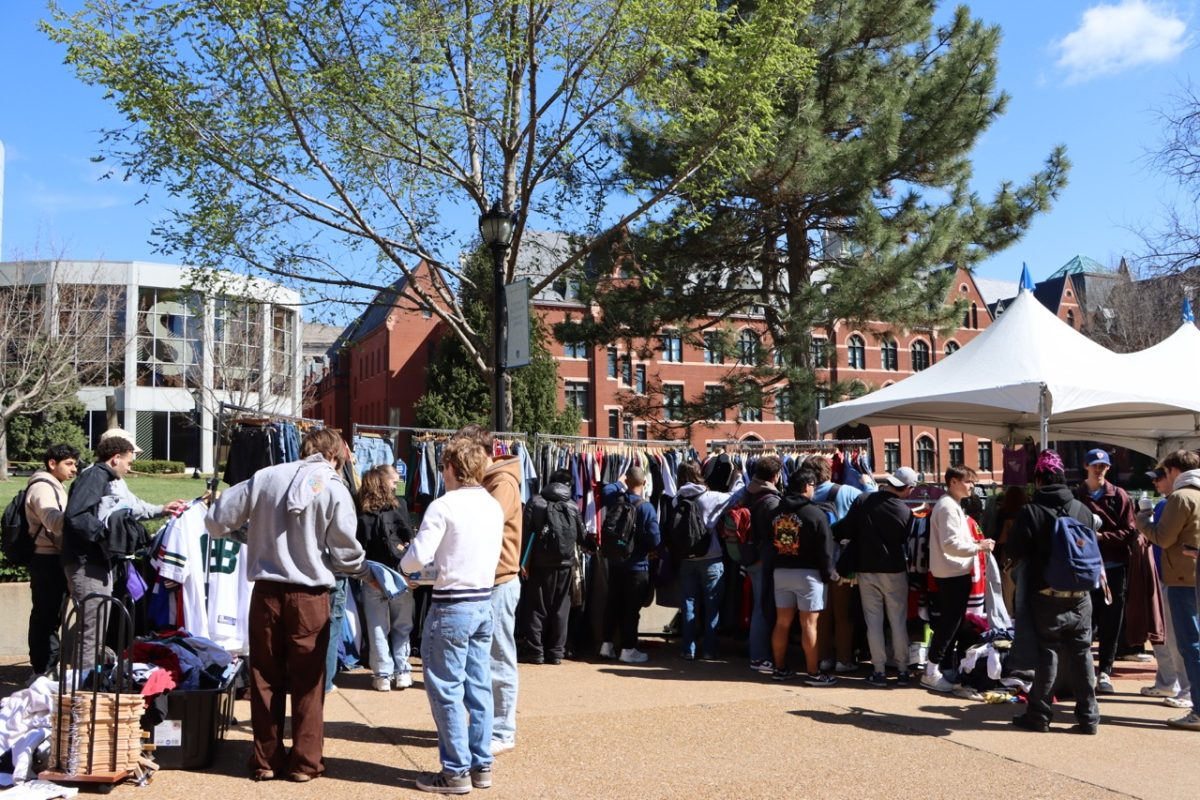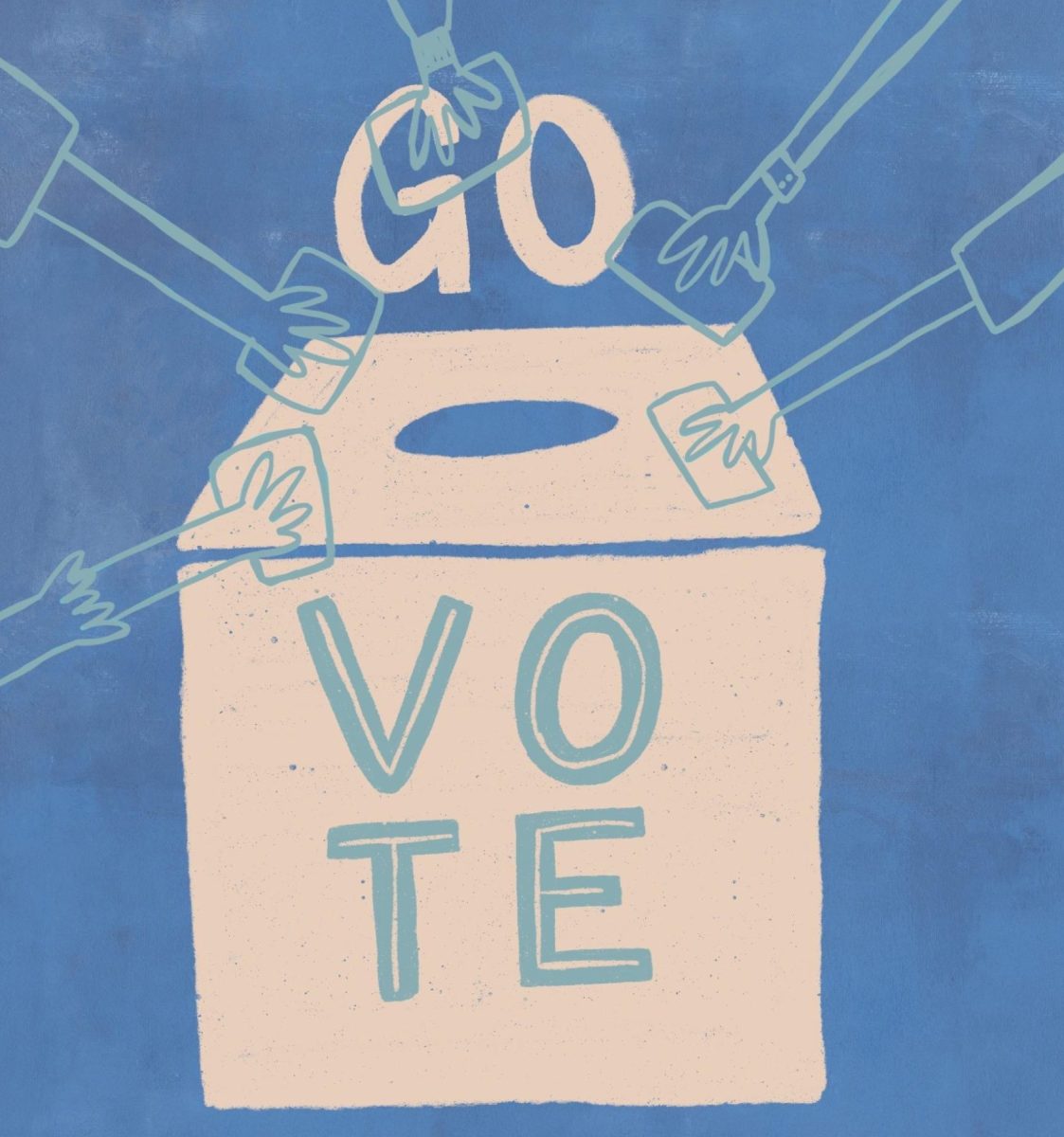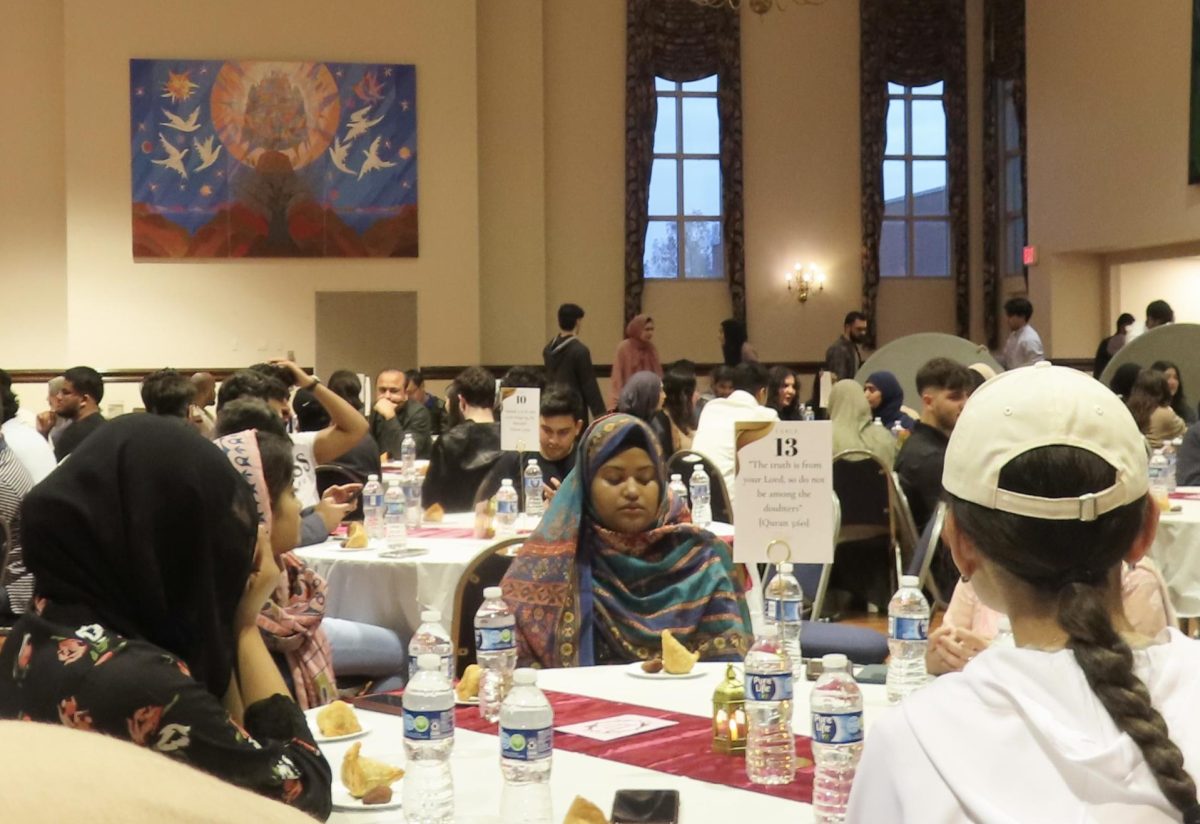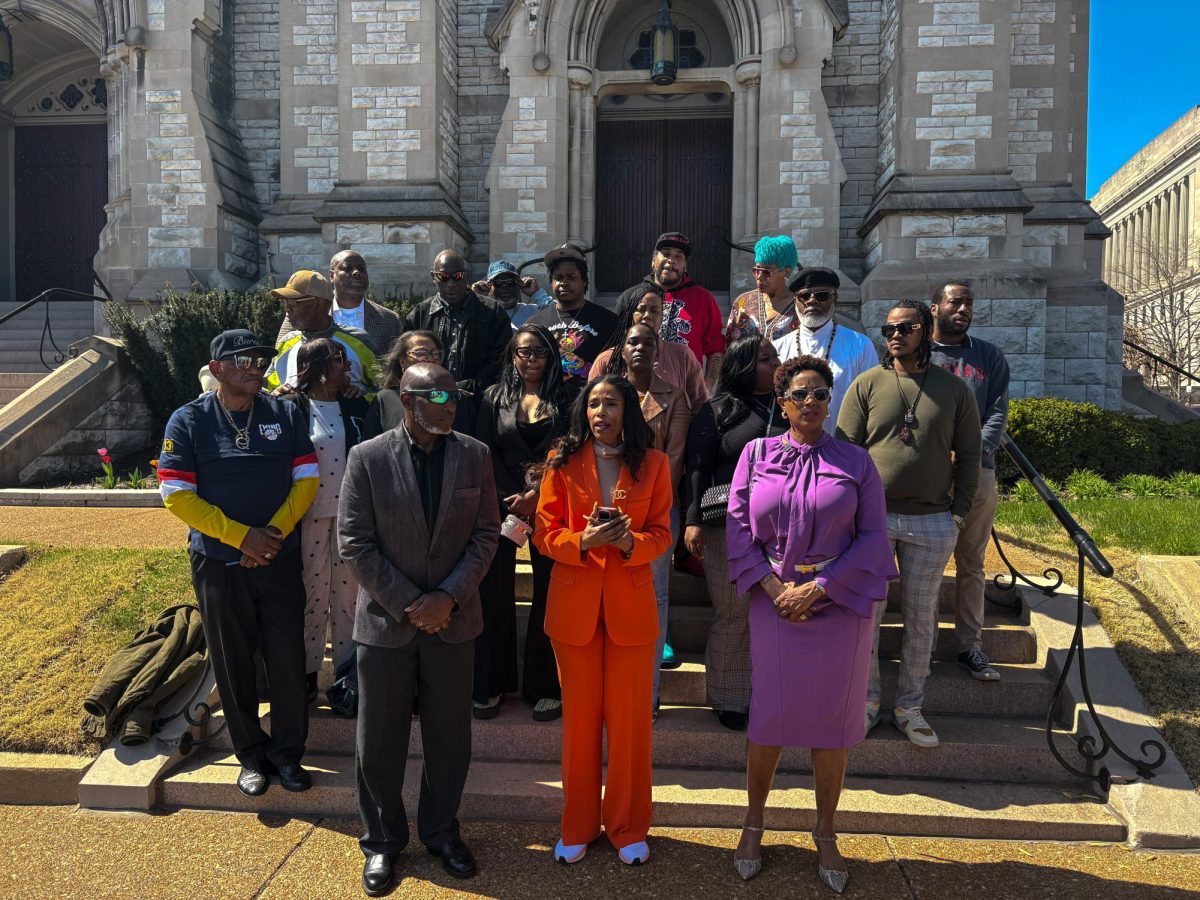The men of Sigma Tau Gamma were pinned as associate members of
their fraternity on Sunday, in a ceremony that officially turned an
interest group into a colony, making Sigma Tau Gamma the 13th
member of the Interfraternity Council at Saint Louis
University.
“We started out as five guys in a dorm room with a box of
pizza,” said sophomore Blake Marcus, president of the Sig Taus at
SLU. “And a year and a half later, we’re 19 guys holding rush
events. It’s pretty amazing.”
After living in Barcelona, Spain for a year, Marcus and his
parents moved to St. Louis.
Marcus spent much of the summer before starting his freshman
year at SLU hanging out with his brother and the other members of
Sigma Tau Gamma’s University of Missouri-St. Louis chapter. Marcus
was amazed at how much his brother had changed–for the better–and
in only a year, because of his fraternity and the bonds he formed
with his brothers.
“He pretty much changed his entire life around,” Marcus said.
“It makes me proud to be his brother,” he added. “And there was a
time when I never thought I’d say that.”
Marcus’ Sig Tau friends at UMSL told him that he ought to start
a chapter at SLU, an idea that he initially laughed at.
“Then I was walking on campus, and a couple of guys told me they
heard I was starting a fraternity,” Marcus said. “I was thinking
… I am?”
But Marcus and his friend Russell Kruse realized that it was
something they were very capable of doing. So Marcus went to some
regional conferences, got in touch with national representatives of
the fraternity, and found out what he needed to do to get
started.
The group made their presentation to the IFC for the first time
in the spring of 2003–and got rejected, necessitating a second
appearance before the IFC this year. “We realized everything that
we weren’t doing,” Marcus said. “It was a good learning situation
for us.”
“They weren’t familiar enough with the Greek community at that
point,” said senior Bob Kehm, president of the IFC. “They went out
and talked to a lot of the other fraternities on campus,” Kehm
said.
This allowed them to gain a better understanding of how the
Greek system and the process of rushing works, as well as getting
to know the fraternities that voted on and approved their status as
a recognized fraternity this year.
“It’s easy to say no if you don’t know what a group is about, or
who they are,” Blake said, “which is why we tried to meet with
every fraternity on campus and sat down and talked with the members
on a personal level.”
Another reason that the Sig Taus were not approved the first
time around was because there was already a colony at the time:
Sigma Alpha Epsilon.
“Part of it was a question of whether or not there should be two
colonies,” Kehm said.
SLU’s Greek community has seen a lot of growth since Delta Sigma
Phi was the first to arrive in 1916; Of the 13 fraternities on
campus, nine have started within the past 20 years; and of these
nine, five have arrived within the past 10 years.
Of these five fraternities, four arrived on SLU’s campus within
the past five years: Aside from SAE, the Beta Theta Pi got its
start in 1999 and Phi Delta Theta and Phi Kappa Tau arrived in
1998.
Now that the SAEs have received their charter, a process that
takes about a year, the climate for Sigma Tau Gamma’s inclusion
into the Greek community is more favorable.
Regardless of whether or not SLU was ready for them, the group
needed more time.
The review process proved to be beneficial for the Sig Taus.
According to Linda Wardhammar, assoiciate director of Student Life,
this is precisely the purpose of the IFC and her task as Greek
Advisor from the Office of Student Life.
“Fraternities are not started haphazardly,” Wardhammar said.
“The school wants them to succeed, and we want to help them. If a
fraternity isn’t organized, it reflects poorly not just on them,
but upon their national fraternity and SLU, and we want to help
make sure that doesn’t happen.”
As for the question of how many fraternities is too many, the
attitude held by the IFC and the Office of Student Life seems to be
that growth is always good. “The IFC will consider any new
fraternity, if there are needs not being met,” Wardhammar said.
In addition, Kehm said that the growth in the Greek community
has been successful thus far. “Of the four new fraternities, all of
them have done extremely well. SLU doesn’t have your stereotypical
Animal House reputation,” he said. “There’s a fraternity for every
single guy on campus, and Sigma Tau Gamma is coming in with a
different perspective.” The Sig Taus, or at least the original 19,
are a close-knit group of guys from Reinert. They come from diverse
backgrounds, and they place emphasis on doing service. They were
looking for their niche and decided to make their own instead,
starting with a pizza box and building up.
“Fraternities might seem very similar because they are all
founded on a similar set of principles,” Wardhammar said. “While
there is much similarity, the members of each fraternity make a
distinction through their personal experience.”
Marcus observed the personal experience of his brother and the
rest of the Sig Taus at UMSL, and he found what he was looking
for–something he had not yet found at SLU.
As a freshman at SLU last year, Marcus admits that he found
himself looking for reasons to stay, a position that he says many
people find themselves in when they are new to St. Louis, or to any
environment. “But people stay because of their friends, and the
relationships they form,” Marcus said. He loved what Sigma Tau
Gamma was about, and with the help of his friends, he brought it to
SLU.
“When you’re in a fraternity you have a strong bond with your
brothers, and that’s a reason to stay,” Marcus said.
Thirteen might seem like a big number, but in the case of Sigma
Tau Gamma, there was room for one more fraternity in the Greek
community.









